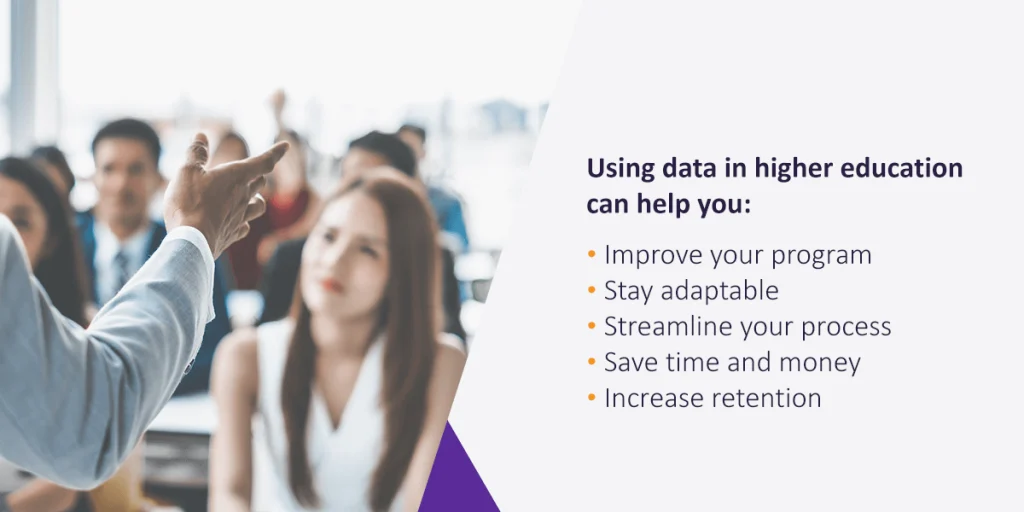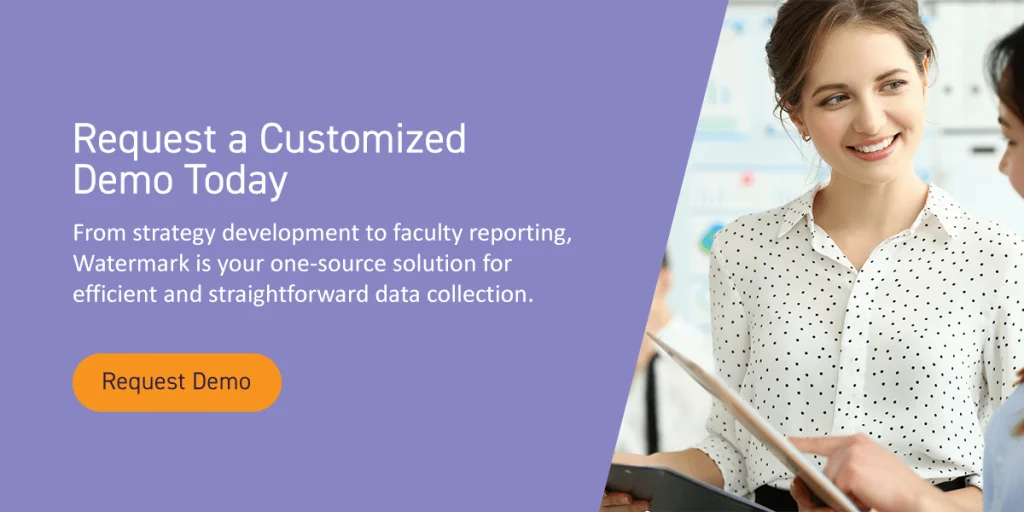



Personalized interactions are essential — and an expectation — in our daily lives. Many consumers are more loyal to companies that recognize, remember, and cater to their unique needs. From healthcare to retail, many industries use digital platforms to consistently engage users and securely collect data.
In an increasingly technology-driven age, personalization in higher education is more important than ever. Students need accessible, individualized solutions, and you can deliver those through data-informed decision-making. Effective data management can help you make more beneficial choices, enhance your students’ academic journey, and set them up for lifelong success. Learn how to apply big data insights to higher ed and create a safer, more curated experience for your students.
COVID-19 accelerated the demand for tailored, engaging education. With the unprecedented rapid shift to online learning, higher education institutions must adapt data-driven decision-making into their strategy. Data collection is a critical component of education personalization, better student outcomes, and institutional growth.
Data-informed decision-making requires dedication, transparency, and respect. Most users will exchange data for more personalization, and accommodating this desire can improve the higher ed experience. How do you make the switch? Follow these tips for a smooth transition:
Higher education faces many challenges, from low engagement to high dropout rates. In a traditional “one-size-fits-all” environment, almost one-third of first-year students drop out before their sophomore year. The personalization of education offers a more immersive alternative that allows students to pursue their passions, learn in the way they want, and chart their own courses. By catering to students’ interests, goals, and capabilities, an individualized approach offers numerous institutional benefits:
Because students and institutions vary widely, successful personalization takes many different forms. A learner-centric experience may involve:

No matter which strategy you choose, student data is a crucial part of personalized learning. Data analytics give you the information you need to understand your students, break free of cookie-cutter education, and transform your institution for the better. Using data in higher education can help you:
Higher ed data comes directly from your students. By analyzing their performance and feedback, you can quickly identify strengths, areas of improvement, and needs. These assessments give you valuable insight and propel you toward institution-wide growth — all on a secure, integrated hub. You can collect student data in two ways:
From strategy development to faculty reporting, Watermark is your one-source solution for efficient and straightforward data collection. You want your students to succeed, and our software can help you focus on that goal. You’ll have access to data that drives informed decision-making, personalized learning, and continuous improvement. Spend less time gathering information and more time using it to achieve real results.
Every semester, the stakes are high for both learners and leaders — acting immediately can make all the difference. With over two decades of industry experience, Watermark has the expertise, passion, and innovative tools to help your institution flourish. Request a demo today to experience our solutions in action!































































































































































































































































































































































































Submit this form to schedule a meeting with one of our reps to learn more about our solutions. If you need customer support instead, click here.